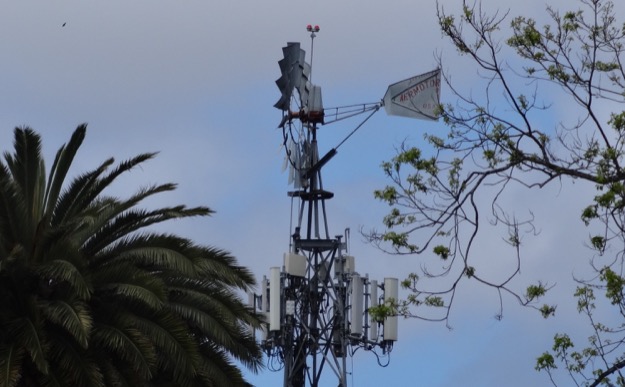
AT&T doesn’t plan to deploy 5G networks in rural California. According to AT&T staff lobbyist Alice Perez, small cell sites will be used for “infill” purposes in rural communities, to supplement big macro sites.
Those infill small cells might even be limited to 4G capability, and not use 5G technology. Her comments came while she was dampening 5G expectations. Any kind of cell site can be small, and she was quite keen about 4G systems, such as AT&T’s planned public safety network – FirstNet – and “voice over LTE”, which AT&T still hopes will be a replacement for copper-based Plain Old Telephone Service in rural areas.
Perez spoke last Thursday at Valley Vision’s Capital Region Broadband Summit in Rancho Cordova. So did I, presenting an analysis of broadband infrastructure in Sacramento County.
For the record, 5G is not an “infill” technology. It certainly can be used for that purpose, like you can use a semi-truck to drive to the store to pick up a six pack. But 5G is about increasing broadband capacity many times over via densified networks and newer technology. And it’s about creating a platform that can support many different types of applications and system architectures on a single network, aka “network slicing”. Without a critical mass of 5G infrastructure, none of that is possible. All you’ll accomplish is to knock a couple of dead spots out of 4G coverage.
AT&T will deploy genuine 5G networks over time, but only in communities with a sufficient number of high potential customers. Perez underscored that reality when she listed the communities where AT&T is in the process of negotiating agreements to attach small cells, of whatever sort, to streetlight poles and other municipal property: all were comfortably within the Sacramento region’s urban/suburban core.
It should not be a surprise that AT&T has no intention of putting true 5G infrastructure in rural areas. As Perez pointed out, decisions about where to build are based on AT&T’s expected return on investment.
Concentrated 5G cellular networks, and the equally dense fiber deployments needed to support them, will only happen where customers are concentrated and the money to be had is equally dense.
